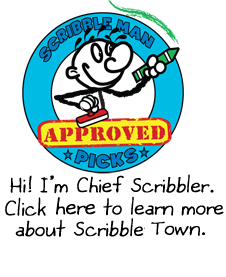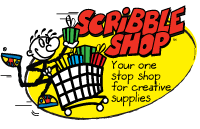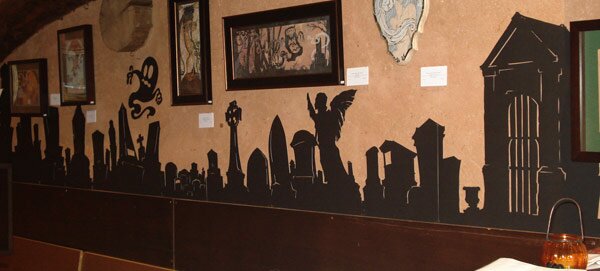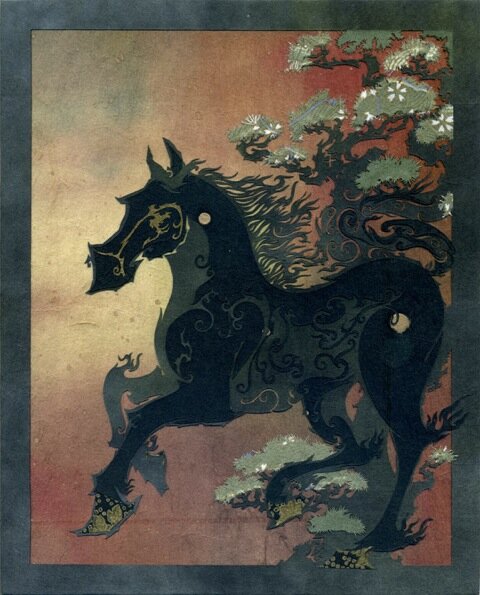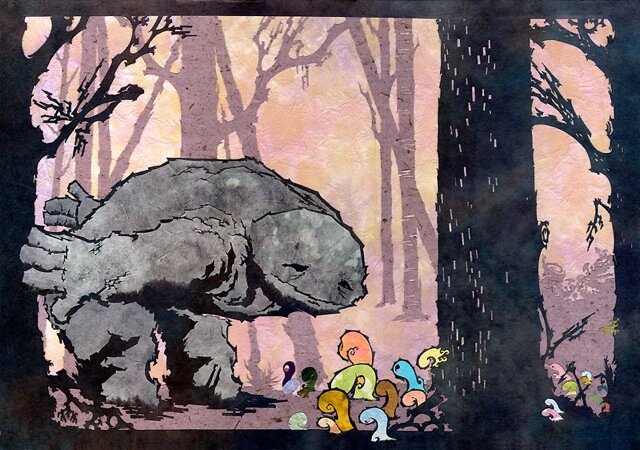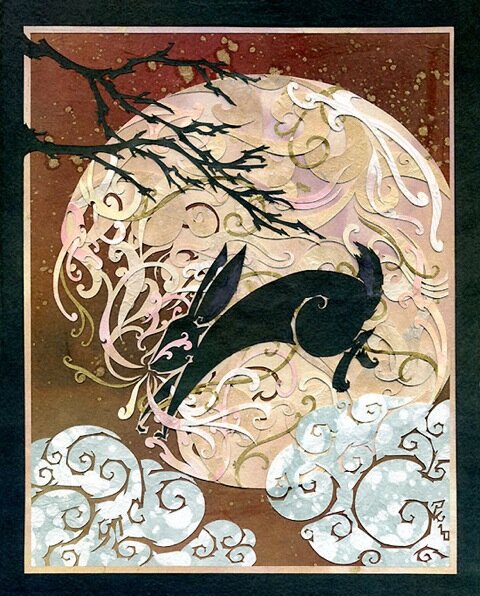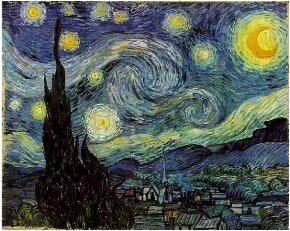Scribble Town (ST): David Devries describes himself as a, “Dad, husband, illustrator, teacher—not much of a fine artist. Though I do gallery shows I am at heart an illustrator.” After you read this Scribble interview with David, you’ll know he’s a a great artist and a lot more than that! Plus he’s got great stories to match!
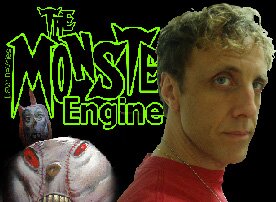
David Devries, The Monster Engine master!
David Devries (DD): I once did a show and my work didn’t fit the space so I offered to redo it smaller. The shocked gallery owners said they would never ask me to alter my art— but that is what illustrators do. What’s the job? What are the parameters? When do you need it by? In terms of personal philosophy I bend the rules when I can, break them when necessary—it is why I love kids—they are all outlaws at heart.
For my commercial work, I specialize in high impact, high drama images. I also publish a book called The Monster Engine that answers the question, “What would a child’s drawing look like if painted by a professional illustrator?” The results are startling transformations of flat childlike imagery into fully painted illustrations. This technique came from my illustration work, primarily in the entertainment field– specifically the comic book, advertising and video game markets. Some of my clients include Dreamworks SKG, Lucasfilm, Universal Studios, Sega, The 3DO company, Seed Studio, ASCAP, Tor Books and Marvel and DC Comics among others. Currently, I teach at FIT and Syracuse University as well as lecturing nationwide on The Monster Engine and my illustrations.
In addition to being well versed in traditional paintings skills I’m also an accomplished Photoshop artist and was featured in Best Practice: The Pros on Adobe Photoshop by Toni Toland from Del Mar Learning (Copyright 2007).
ST: David, the list goes on! I think it’s wonderful that you are truly collaborating with children in the creative process of these Monster Engine artworks. In what capacity can individuals and schools get involved?
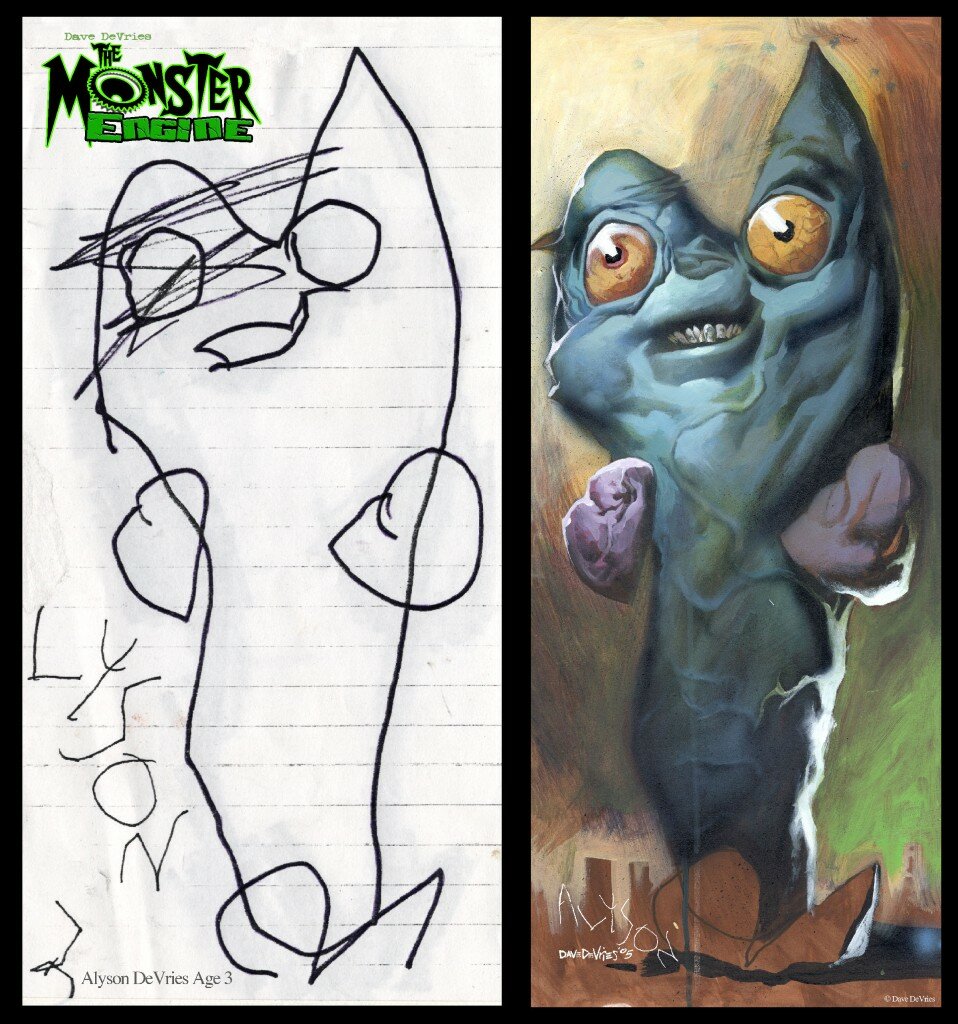
Blue Boy by David Devries
DD: There are two ways. One—I can come to your school and either do a presentation or a workshop. Presentations are defined here and workshops are either a 3-day or 10 week class of guided storytelling and drawing lessons designed to pique the imagination and bolster burgeoning artistic skills.
The other way doesn’t involve my presence at your school. An an elementary school art teacher can team up with a junior or senior high school art teacher to produce collaborative art between schools. Below are two examples.
4th Graders Use Funny Movie Maker Pro to Bring Objects to Life: An Approach Explored by Many Artists (Part 2) from Suzanne Tiedemann on Vimeo.
I only ask that the teachers, if inspired by my project, please give me credit for the inspiration in their descriptions and press releases. Also a link to my site would be very much appreciated. I have worked a long time to build this brand and any credit helps support all that sacrifice and hard work.
B.A. Kindergarten and XRoads So. Middle School Monster Engine Project from Suzanne Tiedemann on Vimeo.
ST: How did The Monster Engine begin? I’m sure it’s been quite the adventure!
DD: It has been an adventure. The idea came to me about 15 years ago and has gone on to big places—recently it was covered on CBS news this morning.
From my website…”It began at the Jersey Shore in 1998, where my niece Jessica often filled my sketchbook with doodles. While I stared at them, I wondered if color, texture and shading could be applied for a 3D effect. As a painter, I made cartoons look three dimensional every day for the likes of Marvel and DC comics, so why couldn’t I apply those same techniques to a kid’s drawing? That was it… no research, no years of toil, just the curiosity of seeing Jessica’s drawings come to life.”
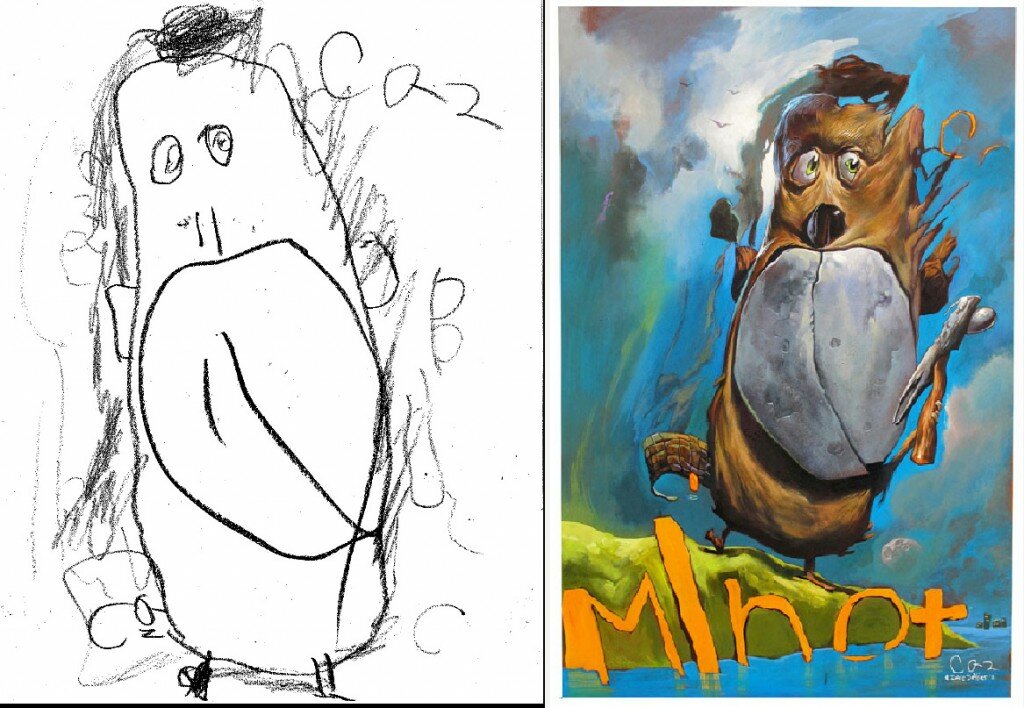
Minot Beaver by David Devries
ST: I wonder how it has developed to what it is now.
DD: After my niece had inspired me with her drawing in my sketchpad I thought that it would be cool to explore this idea but I just kind of forgot about it. A few months later, I was teaching at a comic book art school. The problem I faced there was that the students didn’t appreciate abstract expressionism. I explained that abstract art is needed especially in comic book work to visualize unseen worlds–places and creatures that can’t be referenced with a photograph. They didn’t care and said they still hated abstract expressionism. That’s when it hit me. If I could render a kids drawing–really detail it–then maybe they would see that abstract painting is useful. After all, when I do a Monster Engine painting, I am rendering it with abstract thinking and planning. It worked—some of them got the lesson. After that, I wanted to see how a series would work so I did a few Monster Engine paintings of superheroes as Christmas gifts for my nieces and nephews. The series looked great and then the book idea hatched.
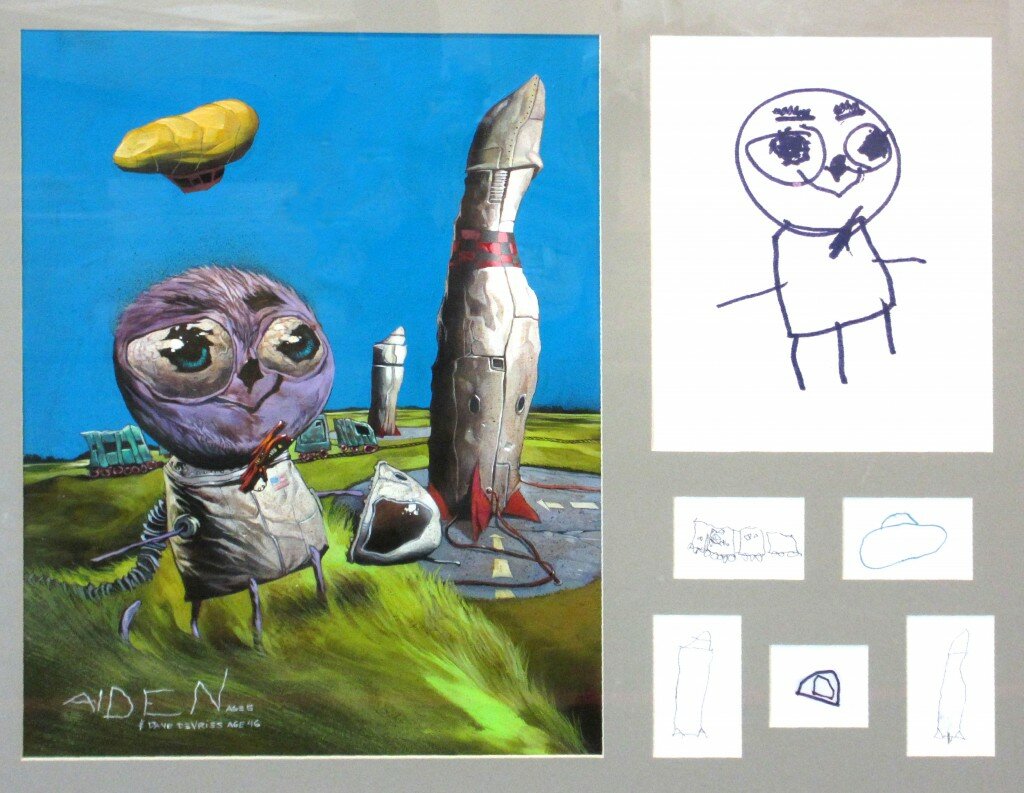
Purple Monkey by David Devries
I chose monsters because I love them and so do kids. That was in 1998 and it took 6 more years to paint all the art, do the interviews, photograph the kids and design the book. I self published a beautiful 48 page hardcover with a dust jacket in 2005 and it became an Internet hit. During the first month of his web site’s launch, the site got 17 million hits and was linked to over 12,000 blogs. A month later I was flown to Japan and appeared on Nippon TV, where I showed his work to an astonished audience.

The Monster Engine by David Devries
The website is internationally known with book buyers from all over the world since it opened in 2005. The Monster Engine has also been featured in many magazines and newspapers including Rue Morgue magazine alongside Lemony Snicket and Clive Barker. In 2006 The Monster Engine was given an honorable mention for “Outstanding Book of the Year” at the Independent Publishers Book Awards in the category of “Most Original Concept.” I’ve been approached numerous times for TV show possibilities and but nothing has gone the distance yet.
ST: Wow! You’ve really accomplished so much! Aside from illustrating, what other kind of artwork do you do? I have a feeling your talent goes beyond the pencil.
DD: I do concept art for games, advertising work, comic book covers and, teaching. Go to www.davedevries.com to see some stuff.
Some history:
In 2011 I finished up an expansive project called BlueShift, which is an eco-thriller, high-octane adventure – lots of action, lots of global warming. We did two issues of the graphic novel – it’s on MTV Geek I’m proud of that project.
I’m super proud though of winning a National Endowment for the Arts award last spring. I was flown to Texas on the grant to work with underprivileged kids in Lubbock. Watch it below or click here.
Out & About Bozeman, Dave DeVries from Lubbock ISD on Vimeo.
In addition, The Monster Engine was featured in its first commercial job. Microsoft and Windows Phone sponsored a contest to get kids drawings in response to the following questions:

Jessica, age 4: “My Windows Phone can make kitty monsters happy with music! The kitty monster gets real real happy and dances around flowers.”
“What do you wish your Windows Phone could do? How do you imagine yourself, your family, and others using your phone?” We received tons of amazing artwork from children all around the world, each one a whimsical creation that showed how Windows Phone could help unlock a child’s imagination. It was a blast and was featured on their website—you can see them here.
Lastly, just visiting a lot of schools and doing my Monster presentations—and having a blast doing so. Here’s a video of one of them.
I use both digital and traditional paints. For painting I use mixed media painting techniques… acrylic, airbrush and colored pencil to make the images you see.
ST: How did your creativity start to grow? As a kid were you making art too? If you have any stories or people that were there to encourage you, please share.
DD: I never thought of myself as an artist then. I drew pictures but no more than any other child my age. When I turned six, though, my older brother, Jack, asked me to come into his room. At the time he was the family artist—I thought I could never be as good as him. He told me to lock the door to his room. I did so. He then told me that the only way I could leave his room was if I drew from a photograph. The idea of trying to draw from a photo was impossible to me—after all he did that–but after much crying and pleading I sat down and drew. After I was finished, the picture was so good that I drew 3 more. So, when Jack finally opened the door to his room I was a changed person—I was an artist.
As for painting—I had to wait till I was 21 years old. I lived in terror of painting till I was almost out of college—can you believe that?
ST: Baby steps…at least you took a chance and got over your fear of painting  Please tell us about My Spooky Heart. I wonder what your son thinks of it now.
Please tell us about My Spooky Heart. I wonder what your son thinks of it now.
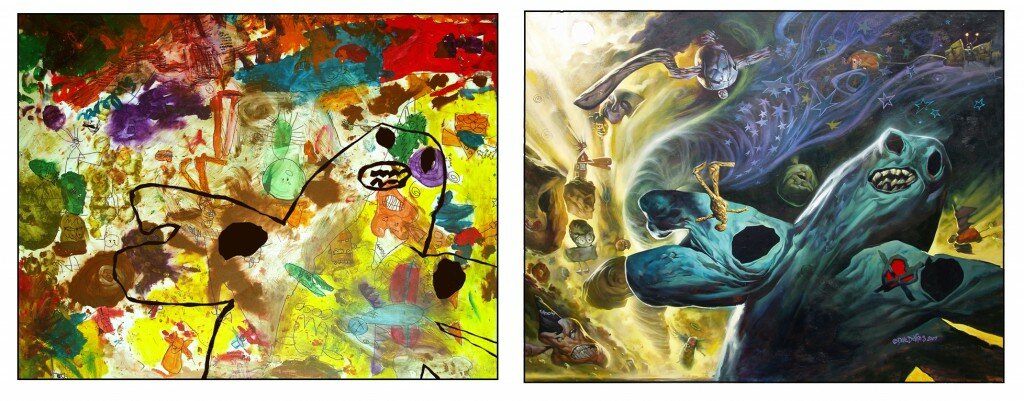
My Spooky Heart by David Devries
DD: You know I never showed it to him. It was done for a charity and was sold shortly after his birth. He never saw the original and I have never shown a picture of it to him. I’m waiting till he’s a bit older to appreciate it. He’s six and I would eventually love to have a conversation with him about it and that time in our lives.
ST: What are you up to now? We’d love to know and join you, if possible!
DD: Just school presentations and Monster Engine commissions for now. Thinking of doing a graphic novel story based upon The Monster Engine—still a ways off but worth the journey.
ST: Go for it! The time is now! Any advice for our Scribblers, you’d like to share?
DD: Just always remember that your kid is always right when it comes to their work. You cannot impose logic upon their creations. This will go a long way to making them confident in their own beliefs and decision-making skills. No matter what they become as adults, they learn that their ideas have substance in those early years. Just think about it—in no other school subject do kids have the right to tell a teacher that they are wrong. Math, Science, English, or History are all quantifiable subjects. If a kid says 2+2 = 3 they are wrong no matter how they justify it. Art isn’t quantifiable— it teaches them to rely upon their instincts.
–fun to watch–wish I worked this fast.
ST: Thanks David for that! Please check our www.themonsterengine.com & www.davedevries.com to see more of David Devries one-of-a-kind artwork!





![]() Any final creative tips for our Scribblers?
Any final creative tips for our Scribblers?

